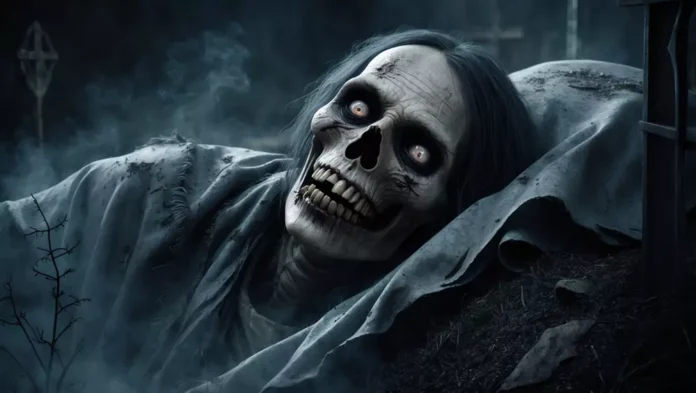Introduction
Nachzehrer is a vampiric creature from German folklore associated with plagues. Said to feed on the life force of the recently deceased, it remains in its grave yet draws energy from those nearby. A feared and malevolent force, it’s often linked to disease outbreaks and the restless dead.
History/Origin
The Nachzehrer, a ghoul-like creature from German folklore, dates back to medieval times when it was often blamed for plagues and mass deaths. Unlike conventional vampires, the Nachzehrer was thought to prey on family members and community members even while confined to its grave. Emerging predominantly in 17th-century Germany, this creature became associated with pestilence and dark magic. Communities often blamed unexplained sickness and misfortune on these undead beings.
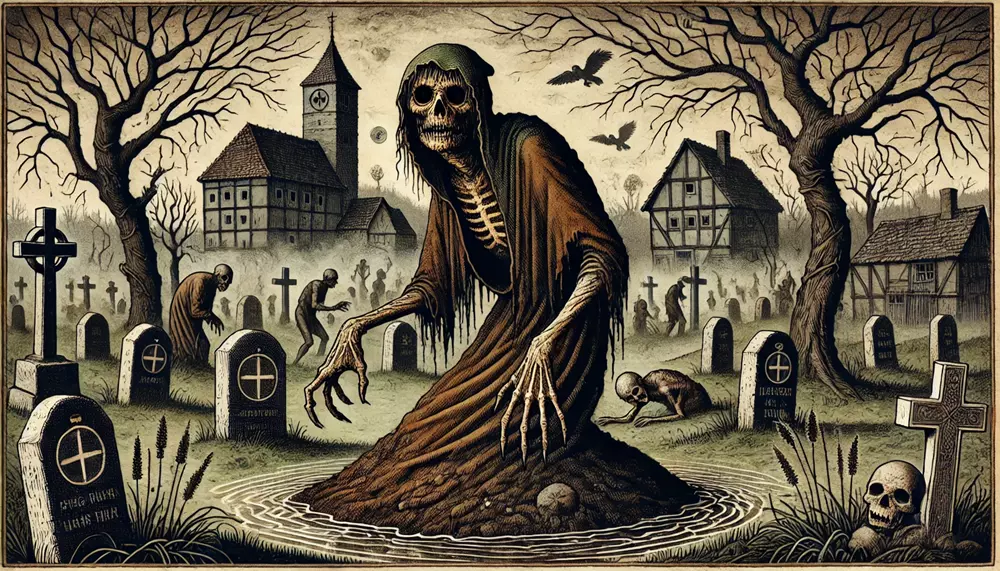
“The Nachzehrer’s influence stretches across Germanic regions, yet each has its own unique twist. Legends of these beings were fueled by fear of the unknown and the spread of plagues.”
Name Meaning
“Nachzehrer” roughly translates to “after-devourer” or “self-eater” in German. This eerie name reflects its habit of consuming its own body parts or the shroud within its grave. The name alone instilled terror, hinting at its unsettling nature and undead hunger for the essence of the living. As the name implies, this creature lives in a liminal space between life and death, existing as both corpse and spirit.
Background Story
The Nachzehrer’s origin stories often begin with a tragic death—one associated with a plague, battle, or violent crime. If a person died unnaturally or if their grave was disturbed, they could return as a Nachzehrer. People believed the Nachzehrer remained in its grave, slowly gnawing at its burial shroud or devouring its own body parts, leading to unexplained deaths among surviving family members.
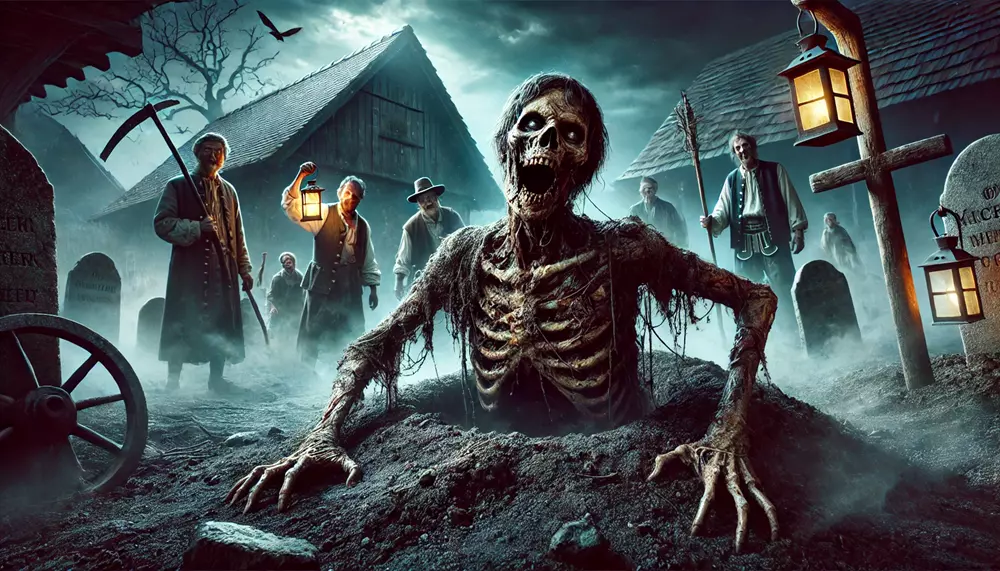
One tale describes a man from Bavaria whose brother died suddenly, only for the rest of his family to fall ill within weeks. Villagers claimed that his brother had returned as a Nachzehrer, consuming their lives from the grave.
“The grave is a tether, not a prison, to such spirits. They stay with us, like a shadow lingering beyond the sunlight.”
Cultural Impact
The Nachzehrer had a profound cultural impact, particularly in German and Eastern European folklore. During the 16th and 17th centuries, plagues and mass deaths stirred fear of the undead. Villagers often exhumed bodies suspected of being Nachzehrer, sometimes decapitating them or placing bricks in their mouths to prevent further ‘feeding.’
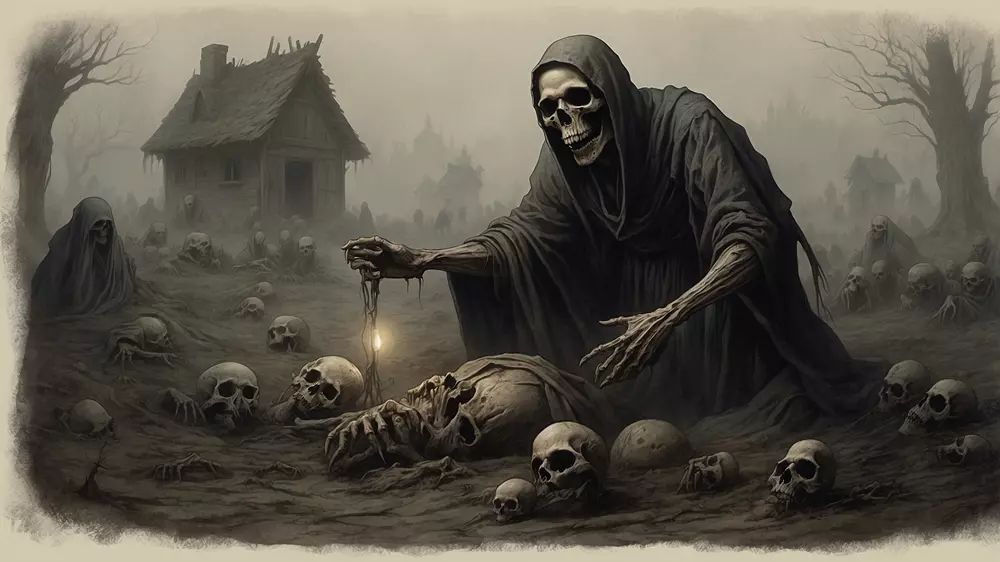
The creature’s association with disease mirrored society’s anxiety over uncontrollable forces. Every time plague struck, people whispered about Nachzehrer among their dead. This fear influenced burial practices, adding layers to funeral rituals, from weighted stones on the chest to iron bars placed on the grave.
Similar Beasts
The Nachzehrer shares traits with various undead beings across cultures. Like the Greek vrykolakas, it was often associated with family curses and disease. The Eastern European strigoi and moroi also resemble the Nachzehrer in their vampiric energy-sapping nature. However, where strigoi physically left their graves to feed, the Nachzehrer rarely emerged, feasting instead from within its own coffin. These similarities underline universal fears of the dead consuming the living.
Religion/Ritual
Religious practices aimed to protect communities from Nachzehrer. In medieval Germany, prayers and protective symbols were employed during burials to prevent bodies from transforming. The Nachzehrer’s presence emphasized the Church’s influence in spiritual protection, with clergy often involved in preventing these ‘risings.’
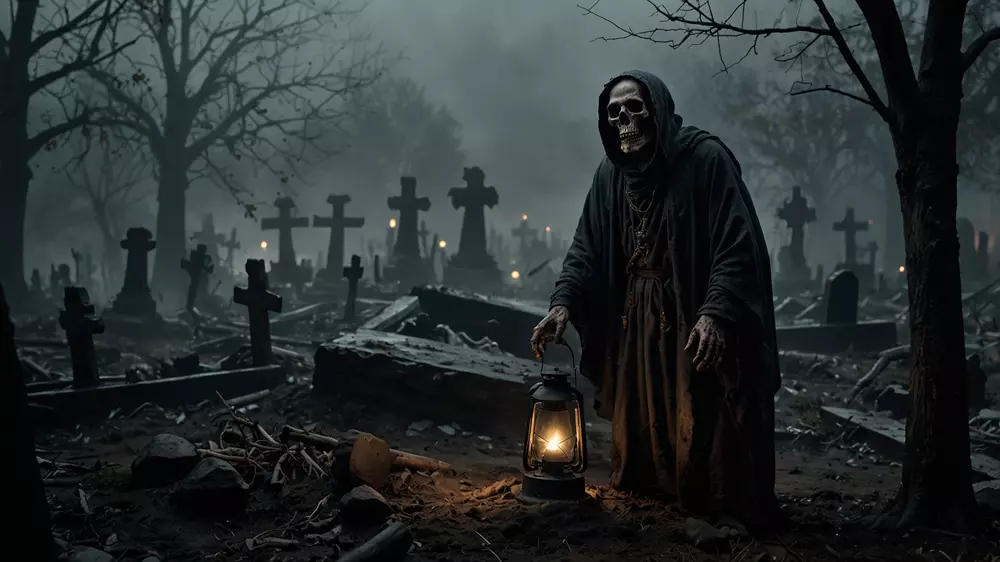
Rituals varied across regions, but many included exorcisms or sanctifying the ground, particularly if someone had died a sudden or suspicious death. Stones placed in graves, limbs tied, or bricks in mouths were standard countermeasures, reflecting a society deeply entrenched in faith as a weapon against dark forces.
“May their rest be undisturbed, lest the shadow of death revisit the living.”
Scientific or Rational Explanations
The Nachzehrer myth likely emerged from misunderstood symptoms of decomposition and the spread of diseases in medieval times. Rigor mortis, natural decay, and the bloating of corpses could lead to perceptions that bodies were “feeding” on themselves, while plagues’ rapid spread often traced back to families, further fueling suspicion.

During epidemics, multiple family members fell ill, which gave rise to the belief that one dead relative could be feeding on the others. Scientists and historians suggest these beliefs may have acted as coping mechanisms, offering explanations in the absence of medical knowledge.
Modern Cultural References
The Nachzehrer’s eerie reputation has seeped into modern media, symbolizing humanity’s primal fears of death and disease. Here are some modern references:
“The Dresden Files” by Jim Butcher – A series that mentions Nachzehrer as a particular form of vampire with necrotic influence.
“Supernatural” (TV series) – An episode features Nachzehrer, portrayed as flesh-eating ghouls that spread plagues.
The Witcher Series (Books and Games) – Inspired by similar Eastern European lore, with necrophage creatures that consume corpses.
“Dark” (Netflix Series) – Though not directly Nachzehrer, the show’s dark, plague-ridden undertones and supernatural references echo similar folklore.
“Dracula” (2006 TV Adaptation) – Features undead feeding within graves, a nod to Nachzehrer myths.
“Vampire: The Masquerade” – This role-playing game includes vampire subtypes influenced by European folklore.
“Grimm” (TV series) – Introduces various mythological creatures, with parallels to Nachzehrer characteristics.
Hannibal Rising – The movie incorporates vampiric elements inspired by undead lore, including Eastern European myth.
Folklore-inspired metal bands – Groups like Powerwolf reference undead myths similar to the Nachzehrer.
“The darkness lingers, stretching across generations, as if feeding off the forgotten sins of our ancestors.”
Conclusion
Nachzehrer embodies humanity’s fear of disease, death, and the supernatural. A creature that doesn’t simply drain blood but life itself, it’s an unsettling reminder of mortality and the fragility of health. Legends of Nachzehrer reveal much about Germanic and Eastern European beliefs, where the boundary between life and death is blurred, and where protection from malevolent spirits was an everyday concern. To this day, the Nachzehrer inspires tales and cultural references that keep the specter of this ancient fear alive, lurking just beneath modern life’s polished surface.


